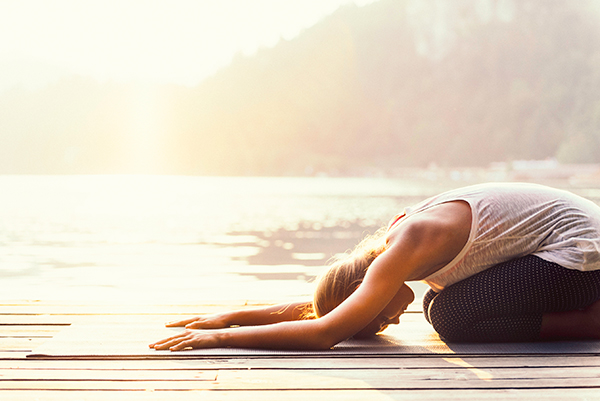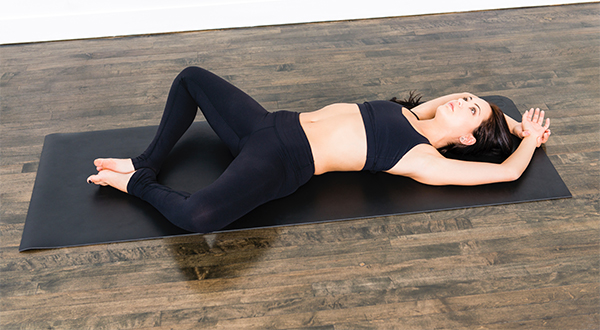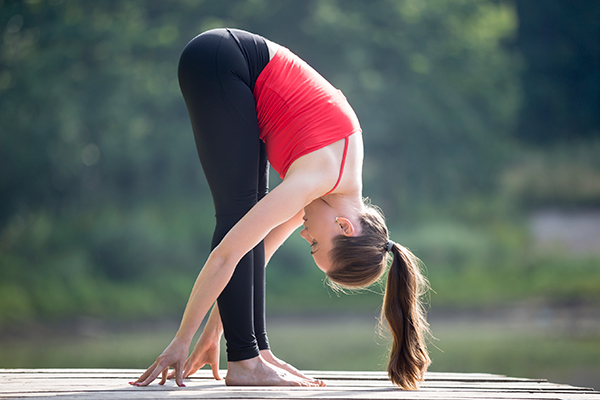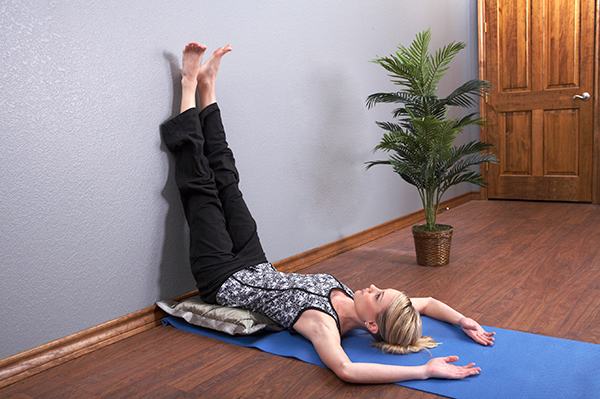Even the most dedicated yogis can still experience the hassle of a bad work week, a disturbing morning, or a weekend filled with obligations. The stress of daily life can make you tired, cranky, and leave your shoulders wracked with tightness.
De-stressing might be the hard part, but getting onto your yoga mat shouldn’t be.
Yoga stretches and strengthens your muscles but it also profoundly calms the mind. At yoga’s center is breathing or pranayama. As you move from one pose to the next, when you sync your breath with your movement, the mind will focus on the task at hand rather than worry about your to-do list. Bringing your mind into the present moment can help reduce stress not only on your mat, but may also improve your overall psychological well-being for hours afterwards.
A study in the Occupational Medicine journal from Oxford Journals states that yoga-based programs can help reduce perceived stress and back pain, and can improve emotional well-being in the workplace, meaning more ease while dealing with your boss, for starters.
According to a 2012 study in the British Medical Journal, stress reduction through techniques that focus on relaxation (such as meditation, yoga, and self-body scans) have been shown to help lower blood pressure. High blood pressure is one of the unfortunate byproducts of chronic stress.
Also, multiple studies (some older) have shown evidence for a yoga practice reducing depression and anxiety symptoms. As reported in the Psychiatric Rehabilitation Journal in 2005, patients at a New Hampshire psychiatric hospital reported lower levels of tension, anxiety, depression, anger, hostility, and fatigue after just one yoga class (according to a self-reported standard questionnaire given before and after the yoga class). Another study supported by the Endocrine Society resulted in yogi’s cortisol levels (that stress hormone that surges through your body) measuring lower after a 50-minute class.
Although one class might be enough to lower your heart rate and get your mind thinking clearly again for a short period of time, a consistent yoga practice can help leave you feeling calm and relaxed in the long run.
Try these 4 poses the next time you need to de-stress, holding each posture for 10 or more breaths.
1. Child’s Pose (balasana)
This restful pose speaks for itself: It’s easy, it’s calming, and it lets you focus on your breathing while blocking out the rest of the world. Start on your knees with your toes together and knees wide. Move your hips slowly back to rest on your heels and extend your arms out in front of you on the mat while resting your head, face down.

2. Reclining Bound Angle Pose (supta baddha konasana)
Similar to savasana or corpse pose (where you simply lie down on your back and relax), reclining bound angle pose is another posture that lets you feel supported and sink into the mat. Lie back, bring the soles of your feet to touch and open your knees to fall to the sides. (If you need support for your knees or if your hips are tight, place a blanket or a block underneath each leg.) With eyes closed, place one hand on your heart and one hand on your stomach and focus on your breathing. Alternately, allow the arms to fall comfortably to the sides or above your head with palms faced up.

3. Forward Fold (uttanasana)
A simple inversion, a forward fold allows for your head to drop below the heart, which can improve circulation and helps calm the nervous system. Start standing with feet hip’s width apart. Bending from the hips (not the waist), slowly lower your torso toward your knees until your hands can reach your shins, feet, or the floor. Make sure to keep the hips in line with the knees, rather than jutting out behind. Allow the head to hang heavy, and slowly shake your head from side to side to release tension. A common variation of this pose is called rag doll: While in forward fold, bend your arms, hold on to opposite elbows and gently sway your torso left and right.

4. Legs Up The Wall (viparita karani)
A relaxing inversion, this pose gets you off your feet and into a position that feels soothing. Lie back with your butt against the wall where it meets the floor. Bring your hands to the floor on either side of your torso, and lift your legs straight up the wall, creating an “L” shape. Straighten your legs and allow the arms to fall to the sides or above your head, palms faced up. If your hamstrings are tight you can move your butt away from the wall a few inches. You may also put a bolster under your back to experience a supported back bend – and breathe deeply.

If you’d like to learn more about yoga, check out our newest program 3 Week Yoga Retreat, specifically designed for those who are new to the practice. This engaging and straight-forward video series will provide a strong foundation of yoga that can help increase your overall sense of well-being.
No comments:
Post a Comment